
The Minimum Standard for Modern Leadership
Preamble
When leadership becomes theater, titles outweigh truth, crises become routine, and cruelty is rebranded as strength, we do not flinch, flatter, or flee. We step in—not as saviors, nor as cynics, but to restore what leadership was meant to be before it was diluted, gamified, and sold to the highest bidder.
We do not lead because we crave influence.
We lead because we cannot abide leadership drift.
This Canon is not a suggestion. It is not aspirational. It is the bare minimum for anyone who dares call themselves a leader in this moment, in this fight against dark temptations.
It was not born from theory. It came from the trenches, tempered by experience, sharpened by hard truths, and refined through relentless pattern recognition.
It is non-negotiable, and it is not for everyone.
This is for those already in the arena or about to step into it—not to perform, but to fortify what must endure, disrupt what must collapse, and rebuild what matters from the inside out.
If you’re finished with performative leadership, hollow vision, and ethical evasion, this is your reckoning.
Either rise to meet this Canon, or remove your obstacle from the path of those who will.
The Canon of Seven Leadership Standards
1. Know Yourself and Your Purpose
If you don’t know why you’re still here, you’re not leading – you’re loitering.
Doctrine: Purpose isn’t a personal luxury; it’s the prerequisite for leadership. If you’re unclear, you’re dangerous. Self-awareness isn’t optional; it’s the ignition switch for leadership. Without a clear vision and personal purpose, you’re just faking it. Leaders confront reality, align with their values, and pursue growth. No clarity means no leadership.
Discipline: Implement regular self-reflection exercises and 360-degree feedback for all leaders. Mandate the creation and review of personal leadership purpose statements.
2. Model Relentless Accountability
No exceptions. No abdication. Own everything or get out.
Doctrine: Leadership is ownership, not lip service. Hold yourself to the highest standard before demanding anything from others. Lead with structure, integrity, and courage. If you’re not modeling it, you’re not managing it — you’re making excuses.
Discipline: Require leaders to take ownership of mistakes publicly and outline corrective actions. Implement a “Relentless Responsibility Protocol” that focuses on solutions and systemic improvements.
3. Develop and Protect Standards
Be the thermostat, not the thermometer.
Doctrine: You don’t react to culture — you shape it. Define what’s acceptable. Enforce what’s essential. Standards aren’t situational; they’re foundational. No boundaries, no backbone.
Discipline: Leaders must actively define, communicate, and consistently enforce operational and cultural standards. Establish clear consequences for violations and remove those who cannot meet the standard, not negotiate it down.
4. Act with Integrity and Courage
Tell the truth. Absorb the cost. Move forward.
Doctrine: Courageous leadership isn’t loud—it’s calm under pressure. Integrity isn’t a slogan—it’s a daily choice. When others panic, you remain steady. When it’s uncomfortable, you don’t flinch. Ethical, empathetic, unshakable. That’s how trust is earned.Discipline: Establish clear ethical guidelines and a safe reporting mechanism for integrity violations. Encourage leaders to have difficult conversations and make unpopular but necessary decisions.
5. Decide Decisively
Indecision is leadership drift in disguise.
Doctrine: Drifting leaders delay. Decisive leaders deliver. You’re not paid to hesitate, you’re here to move. Choose your direction. Own it. Adjust quickly. Waiting for perfect clarity is cowardice pretending to be caution. Indecision doesn’t maintain neutrality; it hemorrhages credibility, speed, and authority.
Discipline: Implement time-bound decision-making frameworks. Require leaders to present clear rationales for their decisions and the expected outcomes. Conduct post-decision reviews.
6. Communicate with Precision
Vagueness is weakness.
Doctrine: Fuzzy communication indicates failed leadership, and it’s unethical. Clearly express what matters, why it matters, and what comes next. Clarity fosters alignment. Vagueness undermines trust. If your team is left guessing, you’re the issue.
Discipline: Mandate clear communication protocols for all major initiatives. Require leaders to use concise language and verify understanding. Conduct regular communication audits.
7. Drive Progress Relentlessly
Build people. Build systems. Build momentum.
Doctrine: Leadership is motion with meaning. Systems must empower, not obstruct. Progress isn’t a perk, it’s architecture. Leaders design movement into the system and remove friction.
Discipline: Leaders must set ambitious, measurable goals and regularly review progress. Implement a culture of continuous improvement and innovation.
Leadership Doctrine

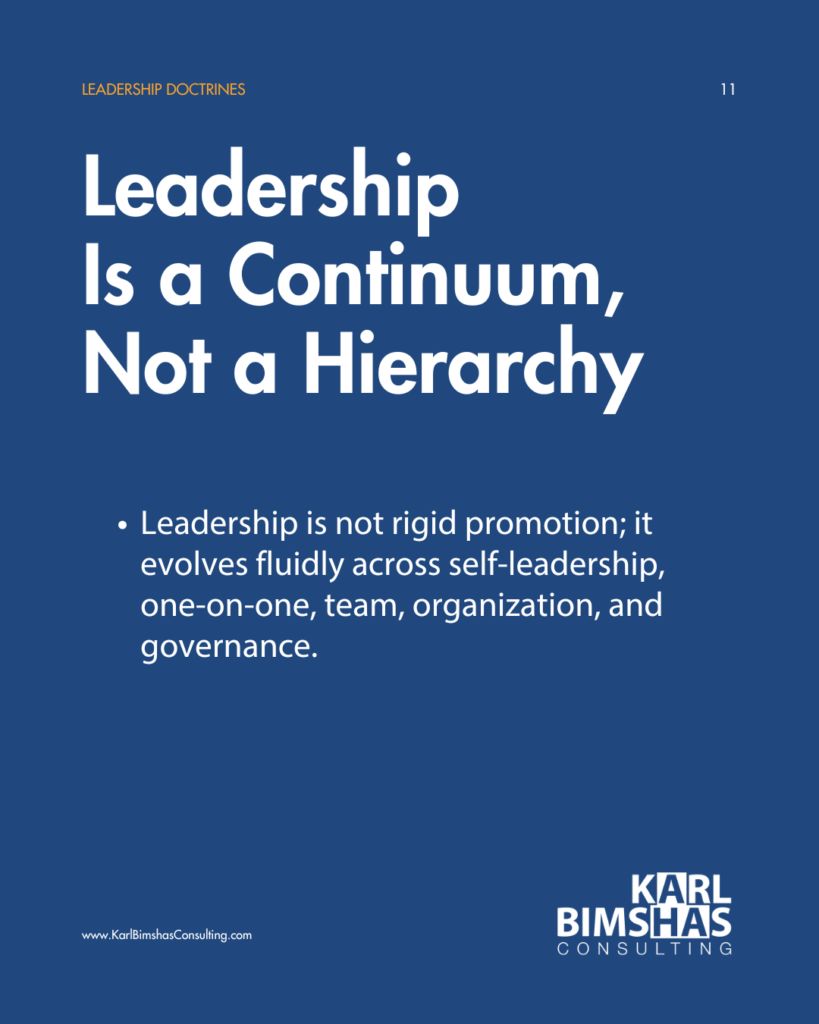
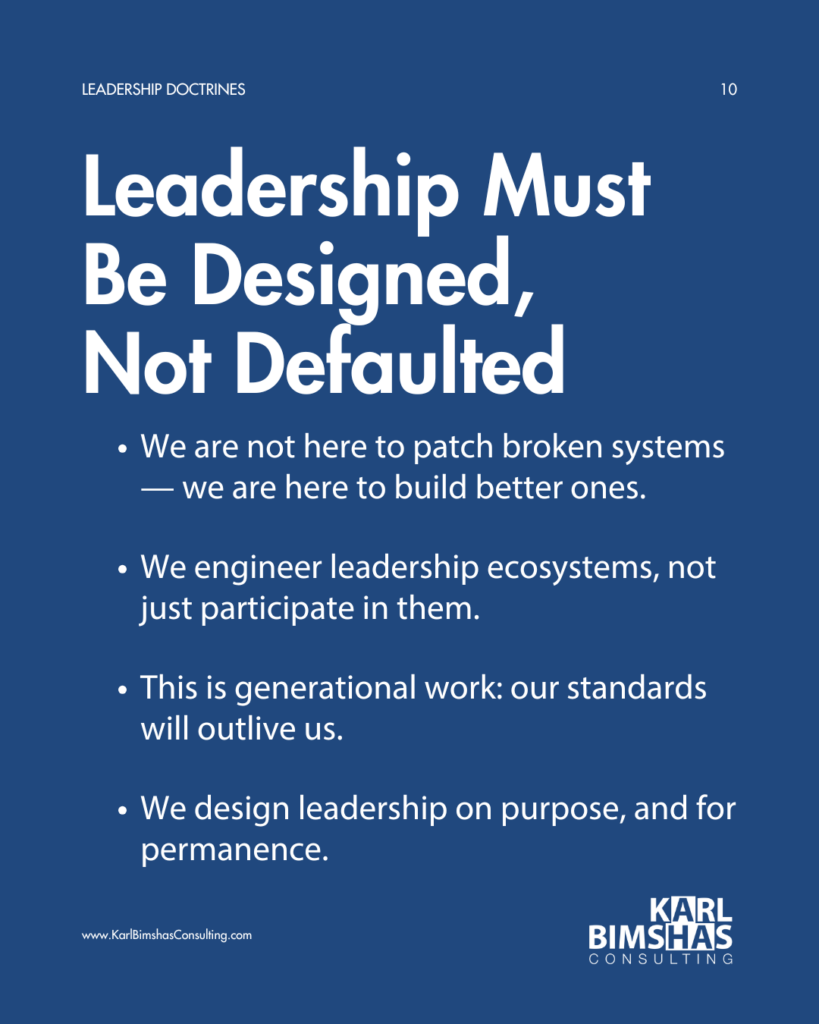
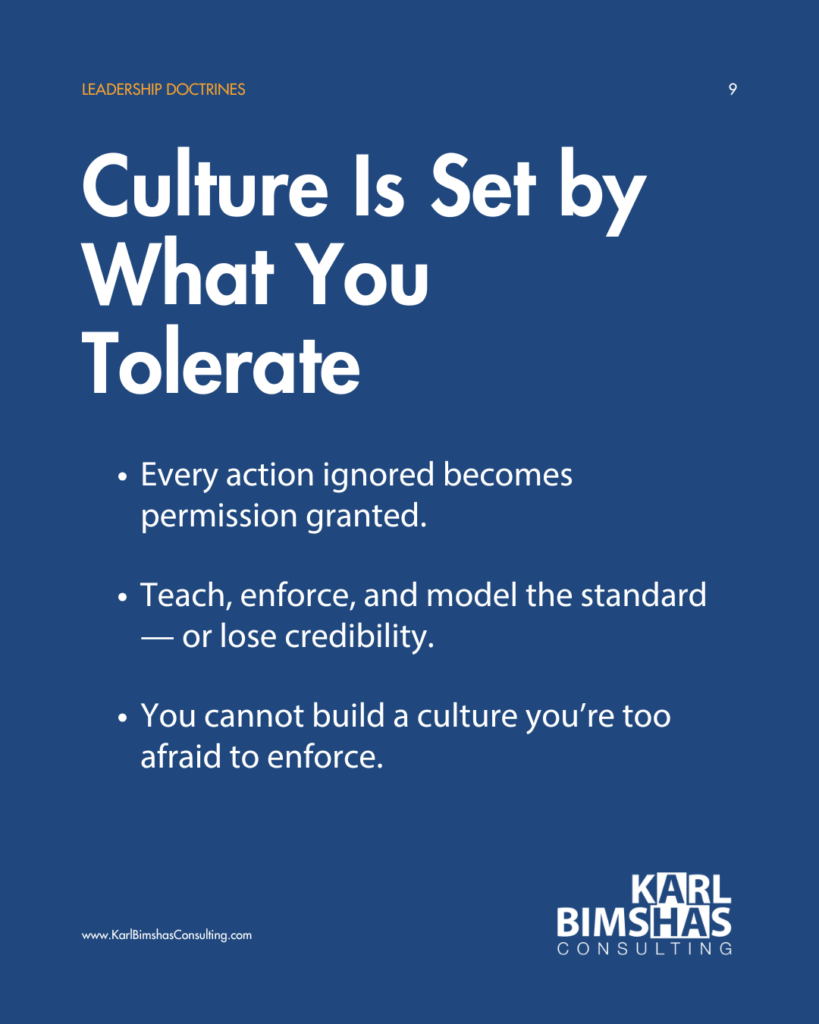
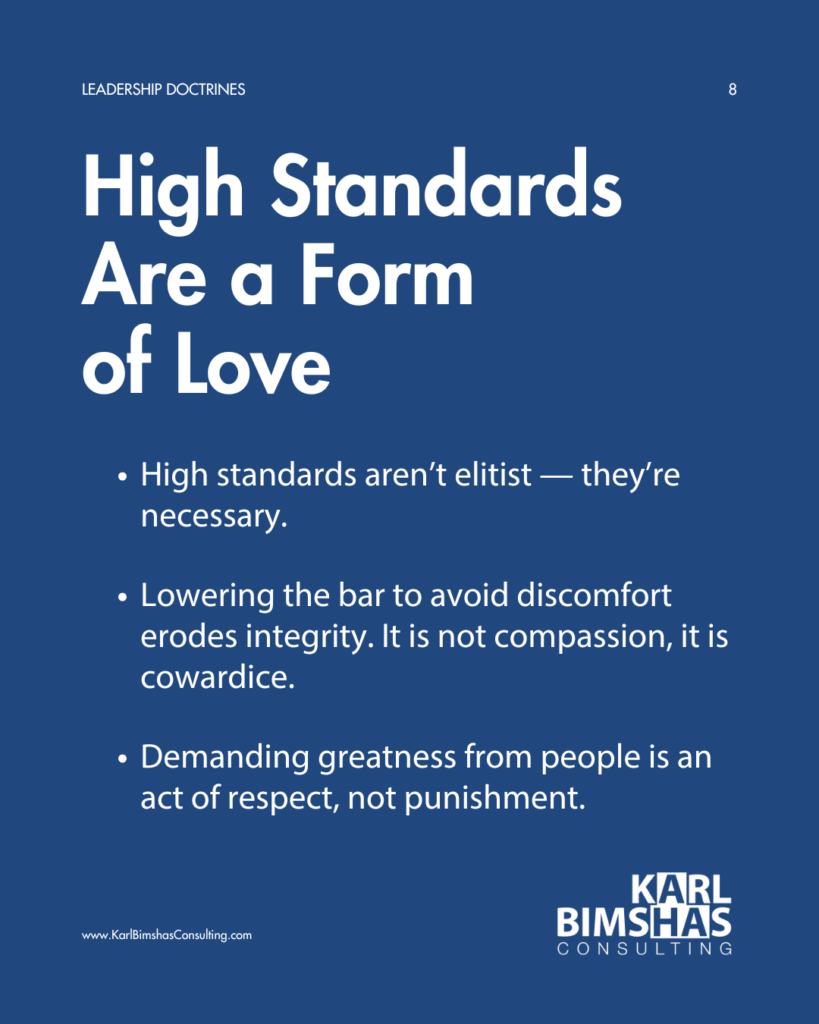
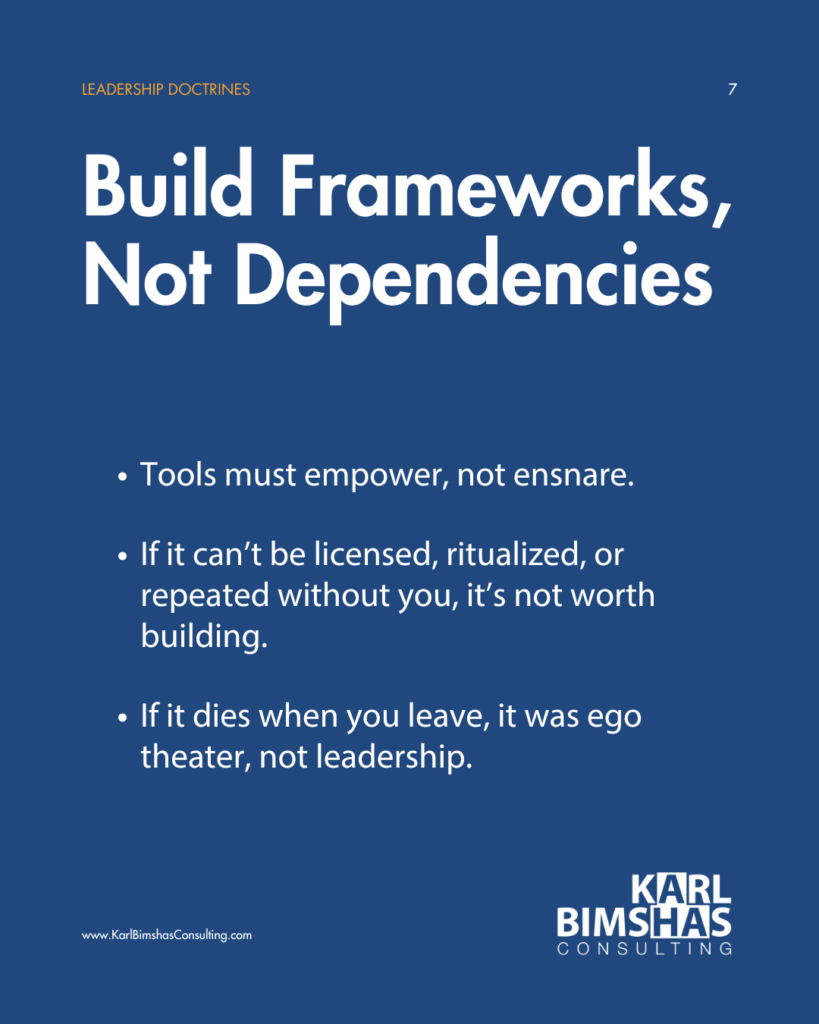


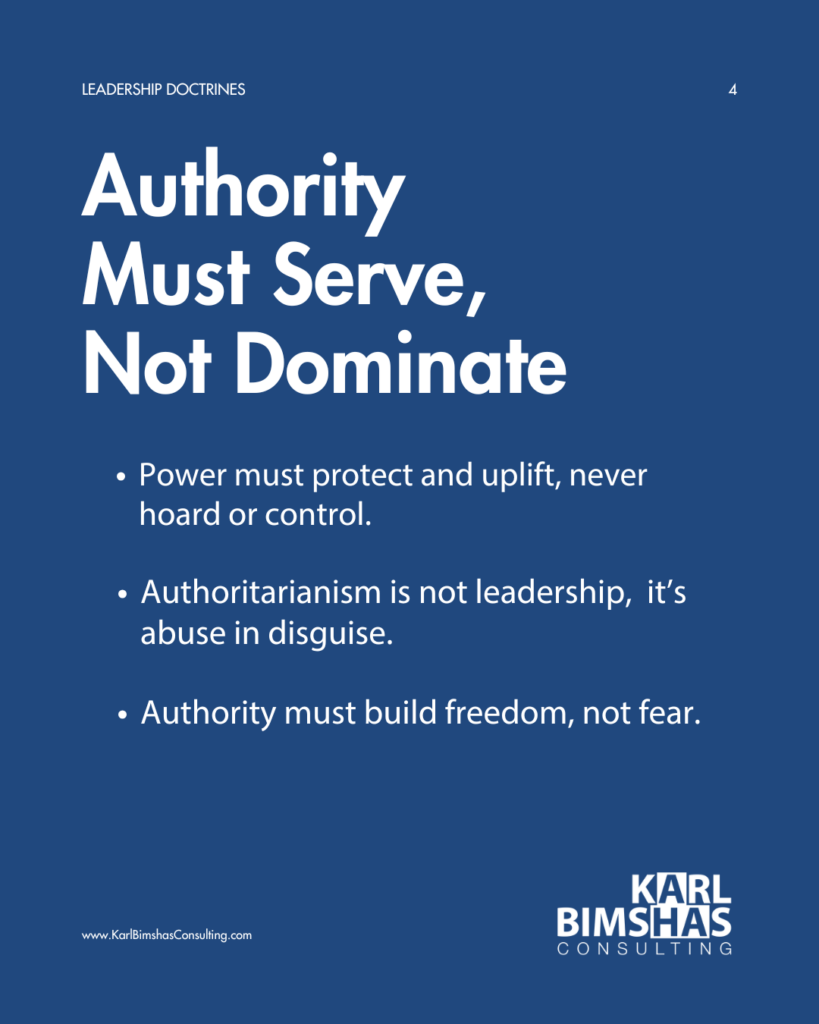
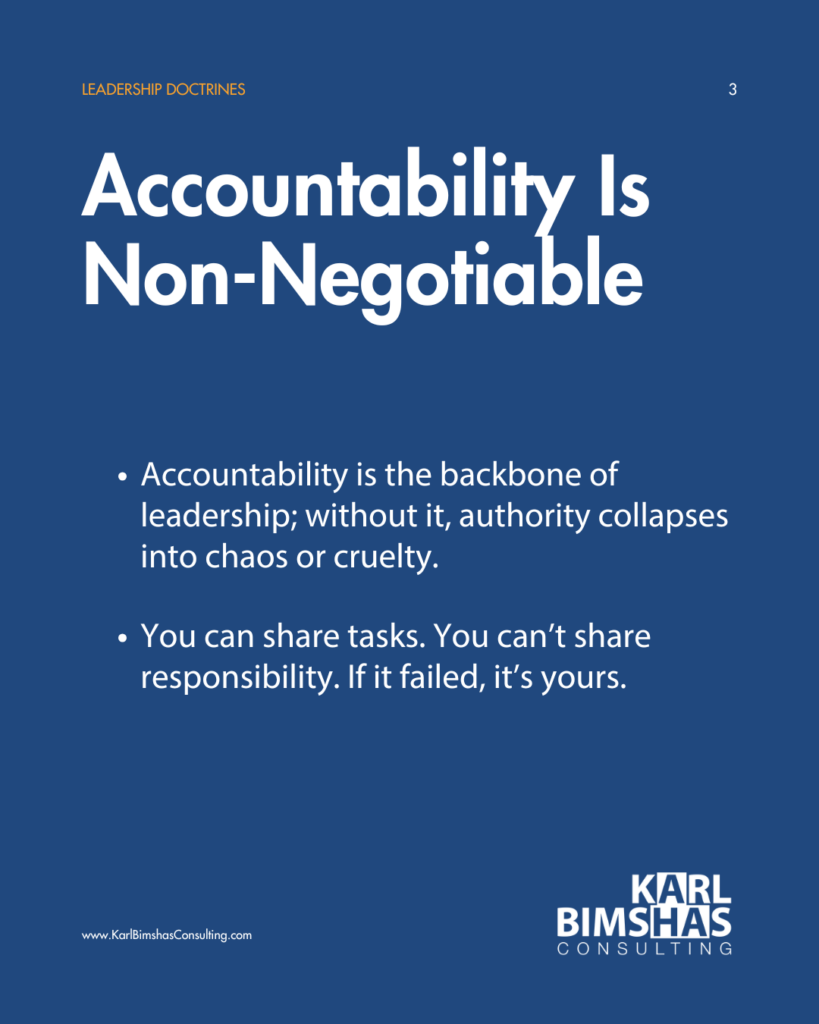
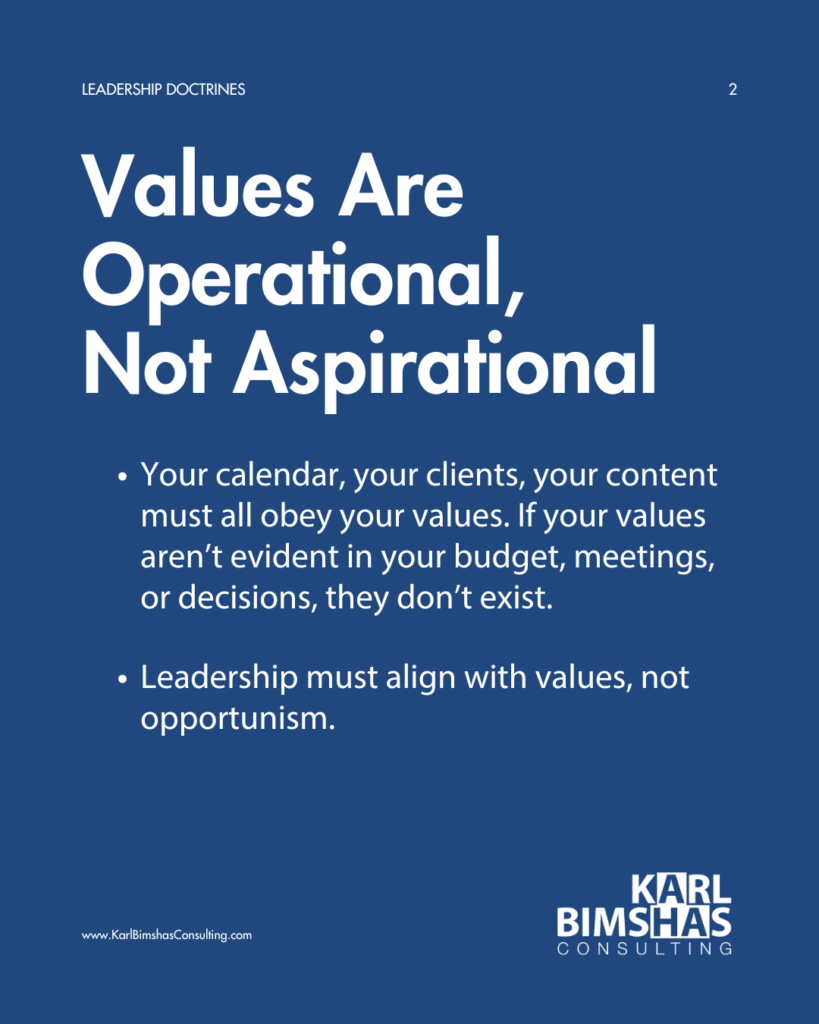
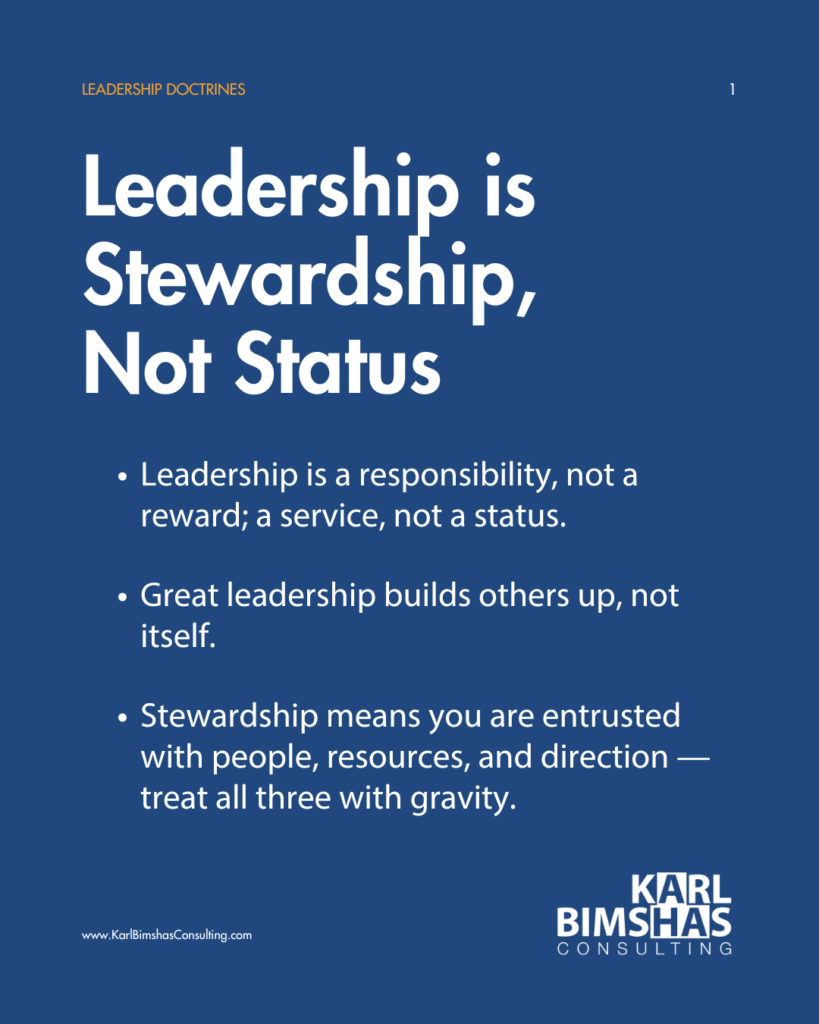
Live It. Audit It. Enforce It.
This Canon is not for reading.
It’s for living.
If you work with Karl Bimshas Consulting Leadership Systems, you don’t “aim for alignment.”
You align.
Not gradually.
Not interpretively.
Precisely.
Delay is drift.
Dilution is drift.
Deflection is drift.
And drift finds no refuge here.This is a system.
It audits. It enforces. It evolves.
You either lead by it, or you’re in the way.
